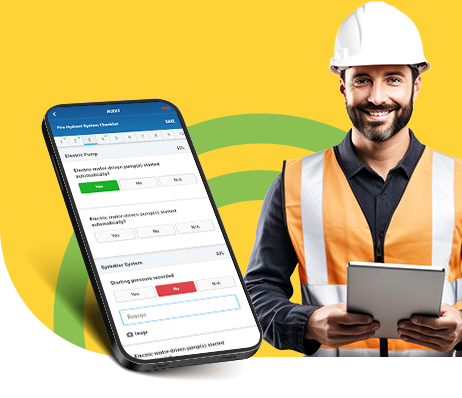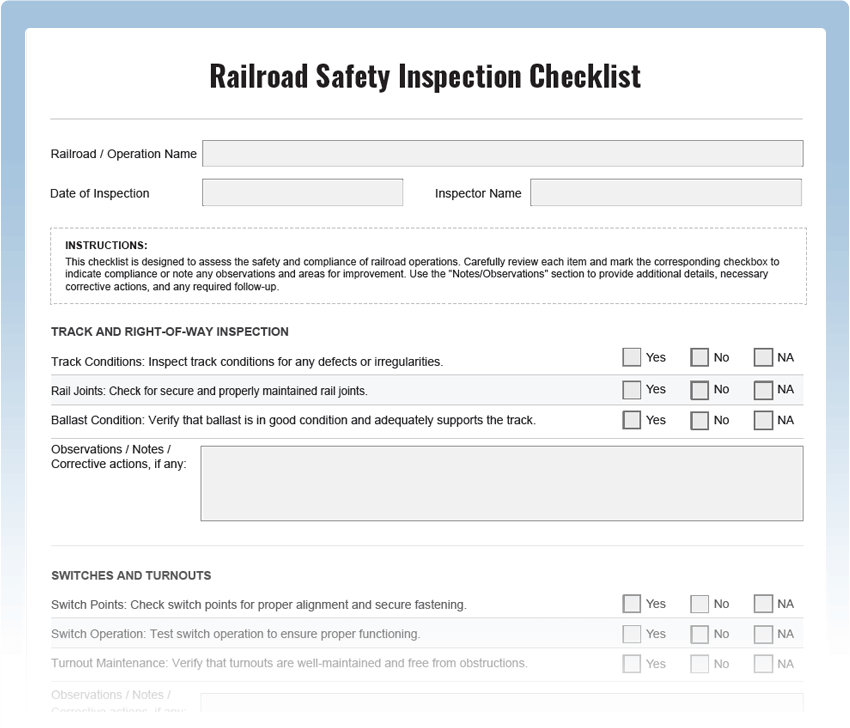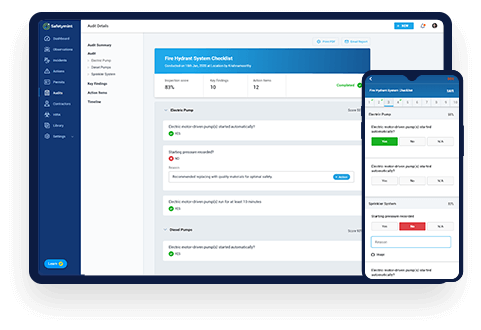Rail-Road Safety Inspection Checklist
Prioritize rail-road safety with our comprehensive Rail-Road Safety Inspection Checklist. This free PDF template covers all critical aspects of rail-road safety, empowering personnel to identify potential hazards, perform regular inspections, and maintain a secure environment for all rail operations.
Digitize this Checklist on Safetymint
- Create unlimited, customized checklists
- Add Actions, with automated reminders
- Works seamlessly with or without internet
- Access via web browsers, mobile or tablets

What is a Rail-Road Safety Inspection Checklist?
A Rail-Road Safety Inspection Checklist is a systematic tool used to assess the safety conditions of railroads, tracks, equipment, and operations. It includes a series of checkpoints designed to inspect various aspects of rail-road safety, such as track condition, signals, crossings, rolling stock, and more. Regular rail-road safety inspections are essential for preventing accidents, protecting personnel, and ensuring compliance with safety regulations.
Key Areas to Inspect for Rail-Road Safety:
- Track Condition: Check the condition of rails, ties, ballast, and track alignment.
- Signals and Signage: Inspect signals, signs, and communication systems for proper functionality.
- Crossings: Verify the condition and safety measures at road crossings.
- Rolling Stock: Inspect locomotives, railcars, and maintenance equipment for safety and compliance.
- Operating Procedures: Review the implementation of operating procedures and crew training.
- Hazardous Materials: Assess safety measures for transporting hazardous materials.
Common Rail-Road Safety Inspection Findings:
Frequent issues found during rail-road safety inspections include:
- Track Defects: Damaged or misaligned tracks that may cause derailments.
- Inoperative Signals: Non-functioning signals that compromise communication and safety.
- Lack of Training: Crew members not adequately trained on safety procedures.
Rail-Road Safety Inspection Best Practices:
- Scheduled Inspections: Conduct routine rail-road safety inspections at scheduled intervals.
- Safety Culture: Foster a safety-first culture among all personnel.
- Emergency Response Plan: Develop and implement a comprehensive emergency response plan.
- Regular Maintenance: Ensure regular maintenance and repairs are conducted.
- Incident Reporting: Encourage prompt reporting and investigation of safety incidents.




